Escape into Balinese artist Sinta Tantra’s tropical paradise
Balinese British artist Sinta Tantra opened a new exhibition in London just before the lockdown. Here, we take a photographic tour through the show at Kristin Hjellegjerde gallery filled with Tantra’s trademark tropical colour scheme, that she wraps around city streets and plazas from Sharjah to Seoul in her public art, as well as in her studio practice
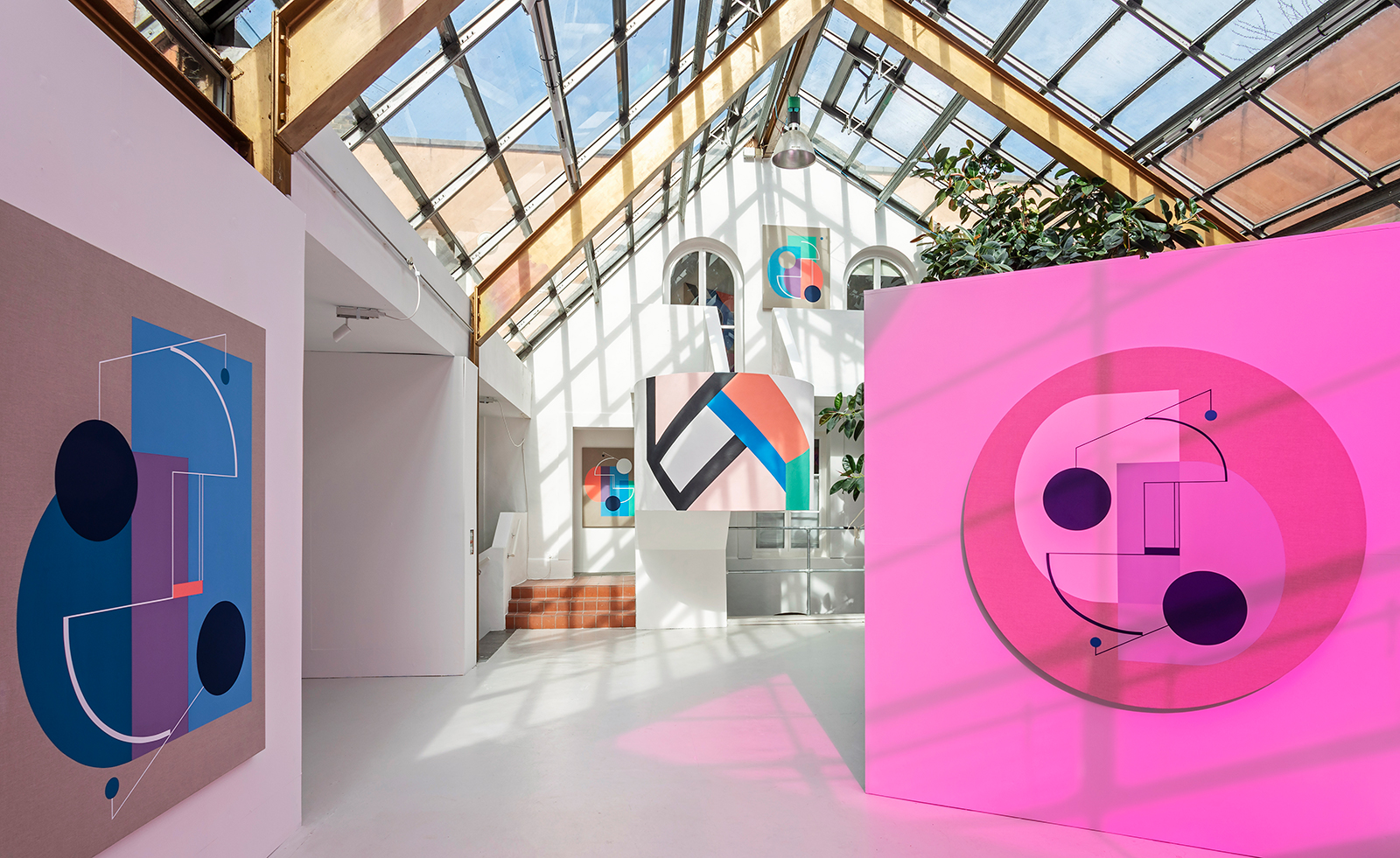
Artist Sinta Tantra’s new exhibition ‘Modern Times’ at Kristin Hjellegjerde gallery in London brings together painting, murals, textiles and film into a poetic installation and comment on the globalisation of modernity. New paintings are framed by the mid-century gallery space (Andrew Logan’s former home and studio), pink-coloured vinyl and the sound of bird-song emerging from a tree.
The title of the show, ‘Modern Times’, takes its title from a Charlie Chaplin film from 1936. Set in the Great Depression, the film follows a factory-working protagonist who struggles with a ‘modern’ life defined by machines and consumption. Providing another take on globalization, black and white footage of Chaplin’s 1932 visit to Bali plays in the gallery space.
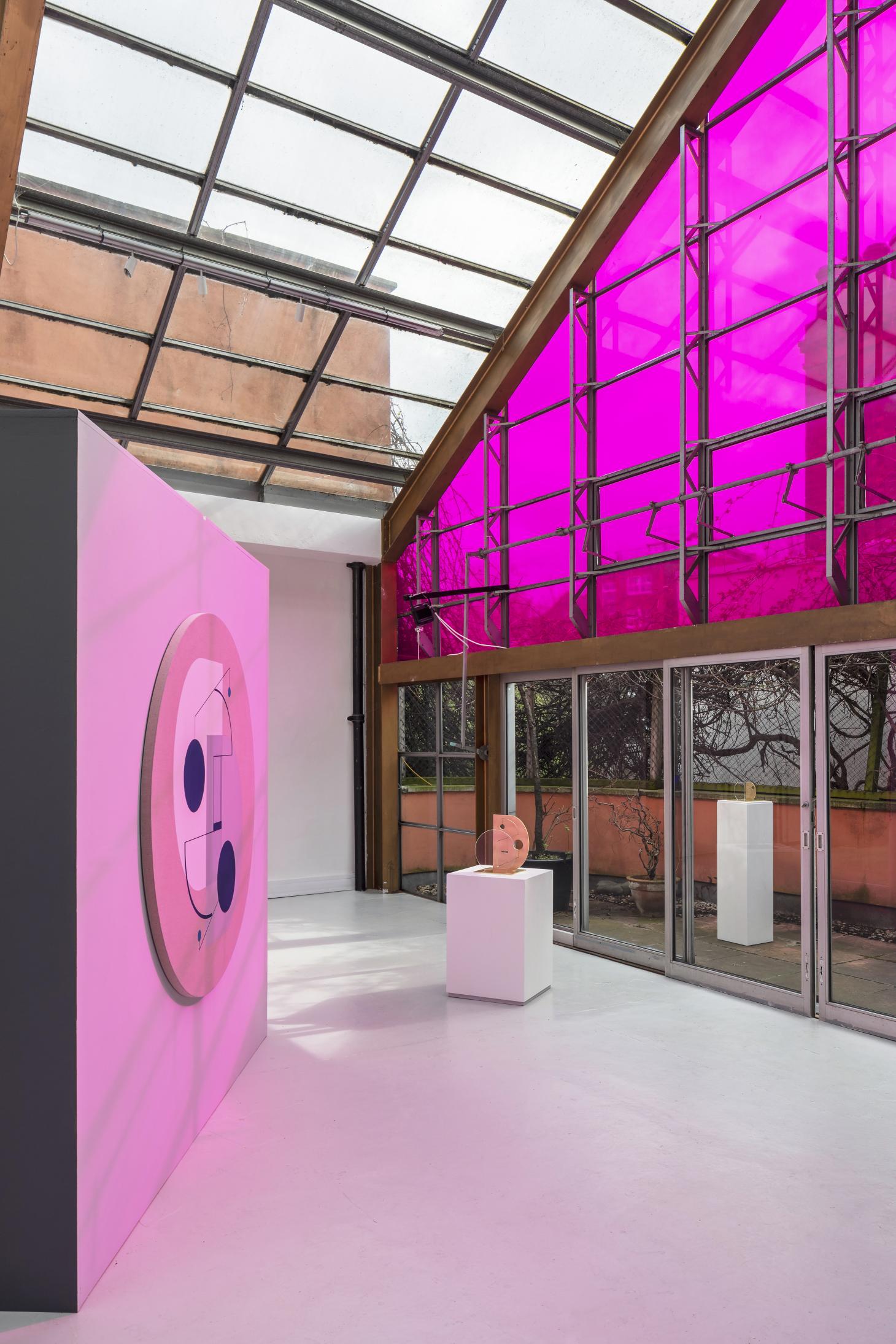
Here Bali is seen in a pre-modern, pre-westernised era – and a golden age. ‘Last summer, I conducted a series of film interviews with my elderly father who grew up in a remote village in Bali, Indonesia, during the 1940s. Both Chaplin and my father seemed to have experienced a ‘golden age’ of Bali – a world untainted by machines and modernity – where days were spent preparing offerings to the Gods, ritual ceremonies, music and dancing,’ says Tantra.
The juxtaposition represents her interest in finding the intersection between modernity, her Balinese heritage and her own globalized identity as an ‘international artist’. Her work uses the language of modernism – geometric shapes also found in the work of Alexander Calder and Buckminster Fuller, and media from textiles to murals in the style of the Bauhaus. Yet her palette full of pinks, greens and yellows injects the Tropics into this language.
The exhibition, curated by Guillaume Vandame, is an installation of layers – film, plants, colours, architecture, sound and sculpture, all diffused in a pink glow from the vinyl across the industrial windows. It reflects the complexity of Tantra’s globalised modernism: ‘I wanted to cut through the vast architectural volume of the space and somehow inject the spirit of escapism or stepping into another world – part nostalgic, part historical, real and imagined,’ she says.

Gambin I, 2019, brass and glass
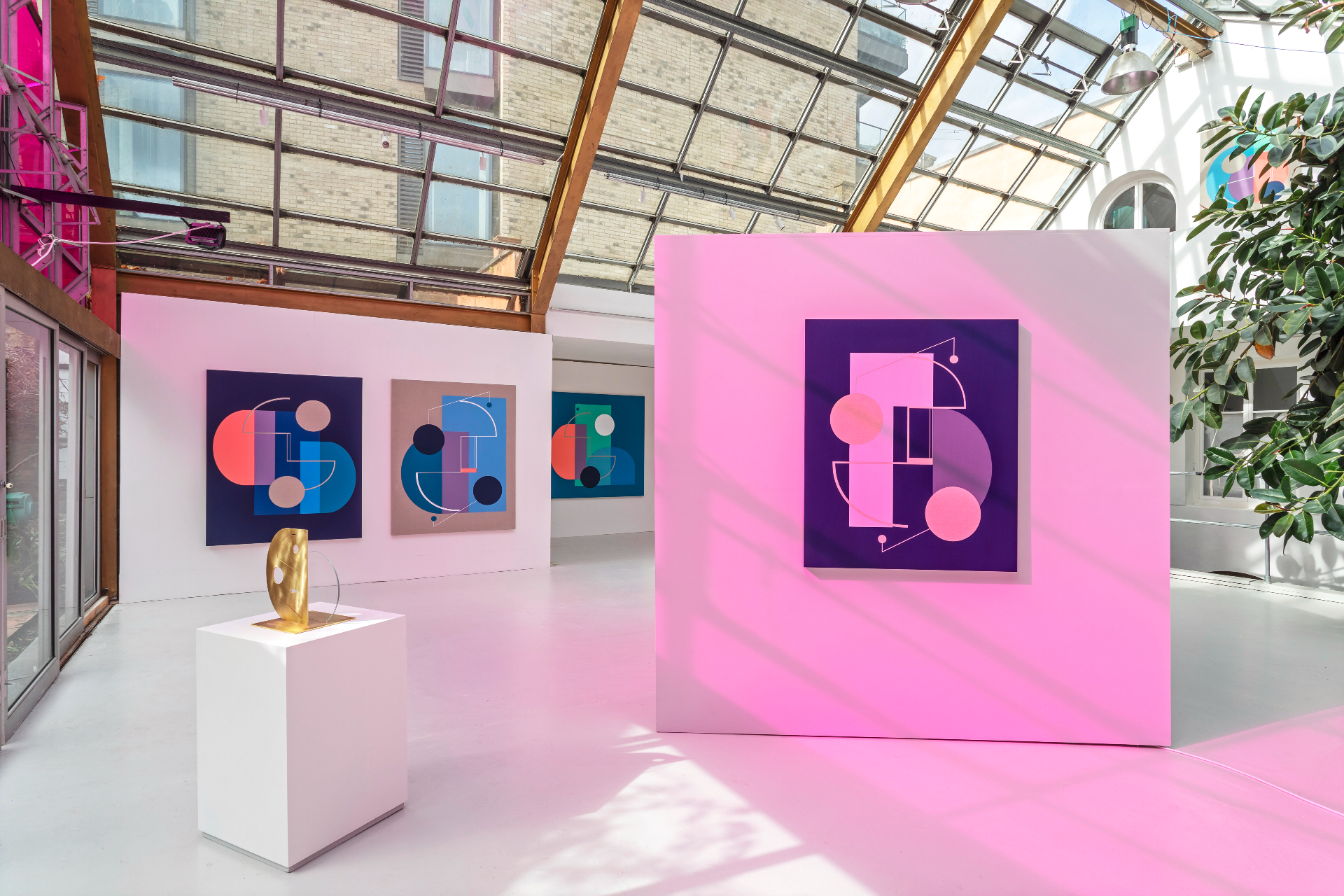
Installation view
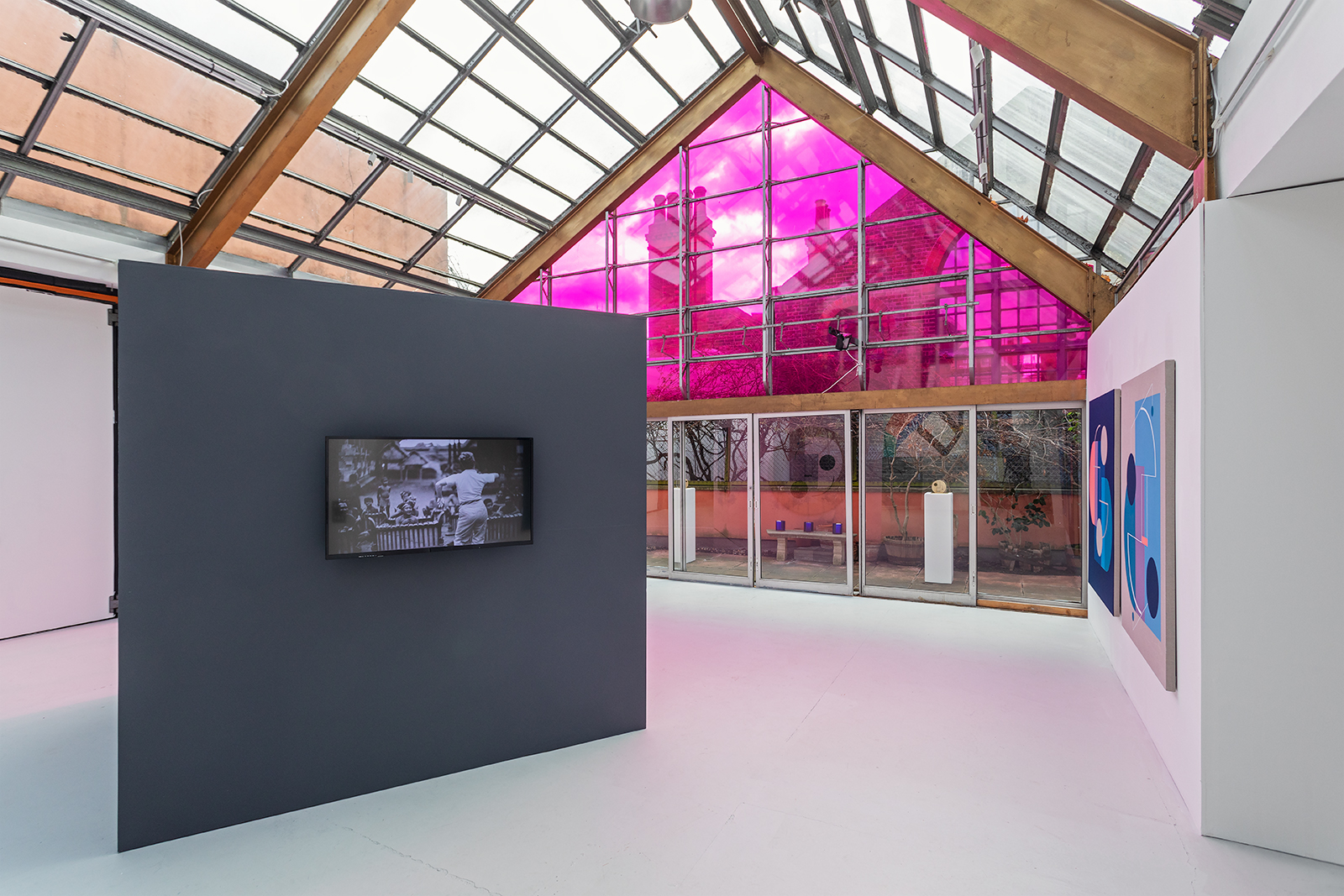
Installation view
INFORMATION
Wallpaper* Newsletter
Receive our daily digest of inspiration, escapism and design stories from around the world direct to your inbox.
ADDRESS
Kristin Hjellegjerde gallery
2 Melior Place
London
SE1 3SZ
UK
Harriet Thorpe is a writer, journalist and editor covering architecture, design and culture, with particular interest in sustainability, 20th-century architecture and community. After studying History of Art at the School of Oriental and African Studies (SOAS) and Journalism at City University in London, she developed her interest in architecture working at Wallpaper* magazine and today contributes to Wallpaper*, The World of Interiors and Icon magazine, amongst other titles. She is author of The Sustainable City (2022, Hoxton Mini Press), a book about sustainable architecture in London, and the Modern Cambridge Map (2023, Blue Crow Media), a map of 20th-century architecture in Cambridge, the city where she grew up.
-
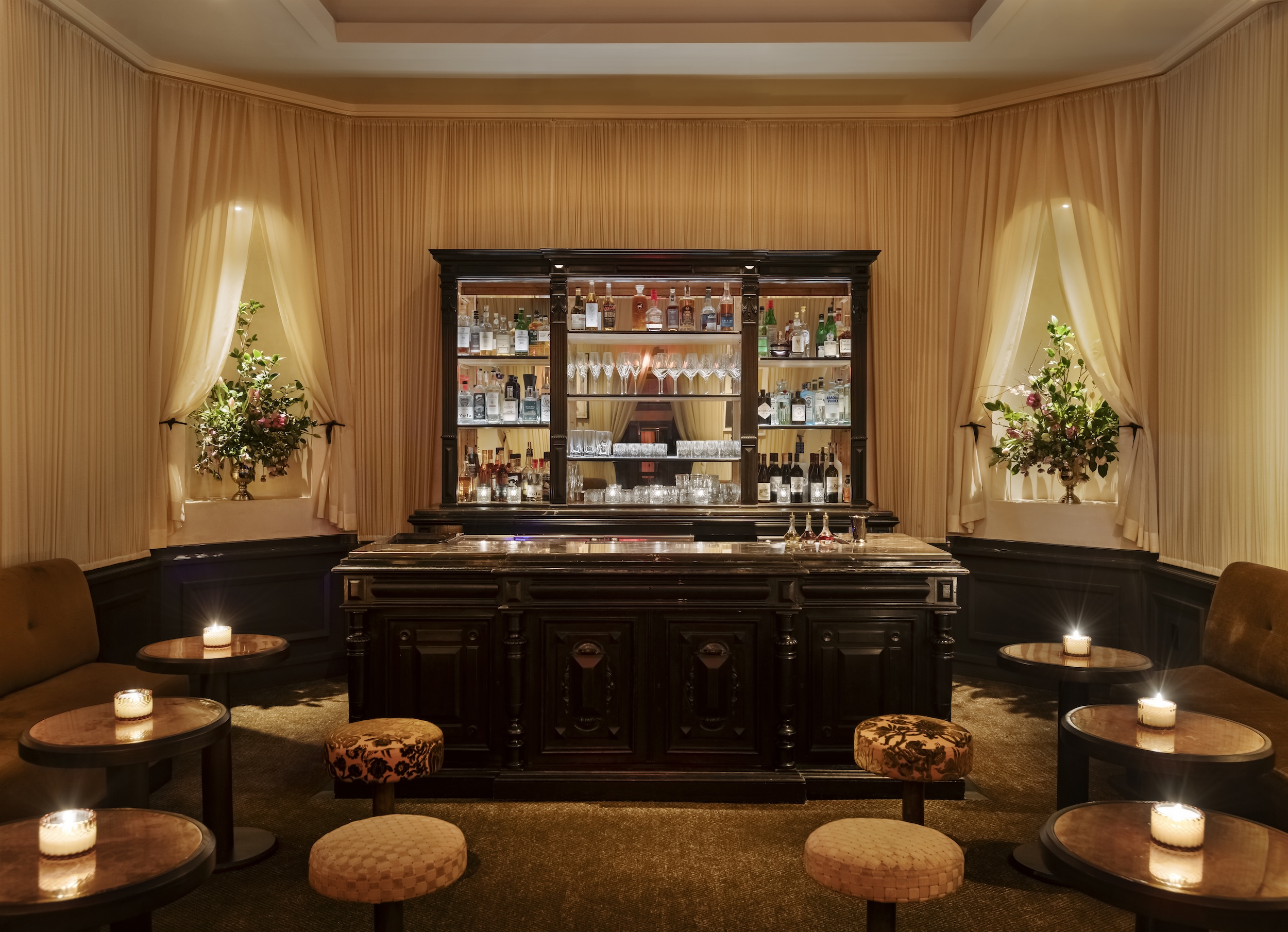 At this secret NYC hangout, the drinks are strong and the vibes are stronger
At this secret NYC hangout, the drinks are strong and the vibes are strongerFor People's bar, Workstead serves up a good time
By Anna Fixsen
-
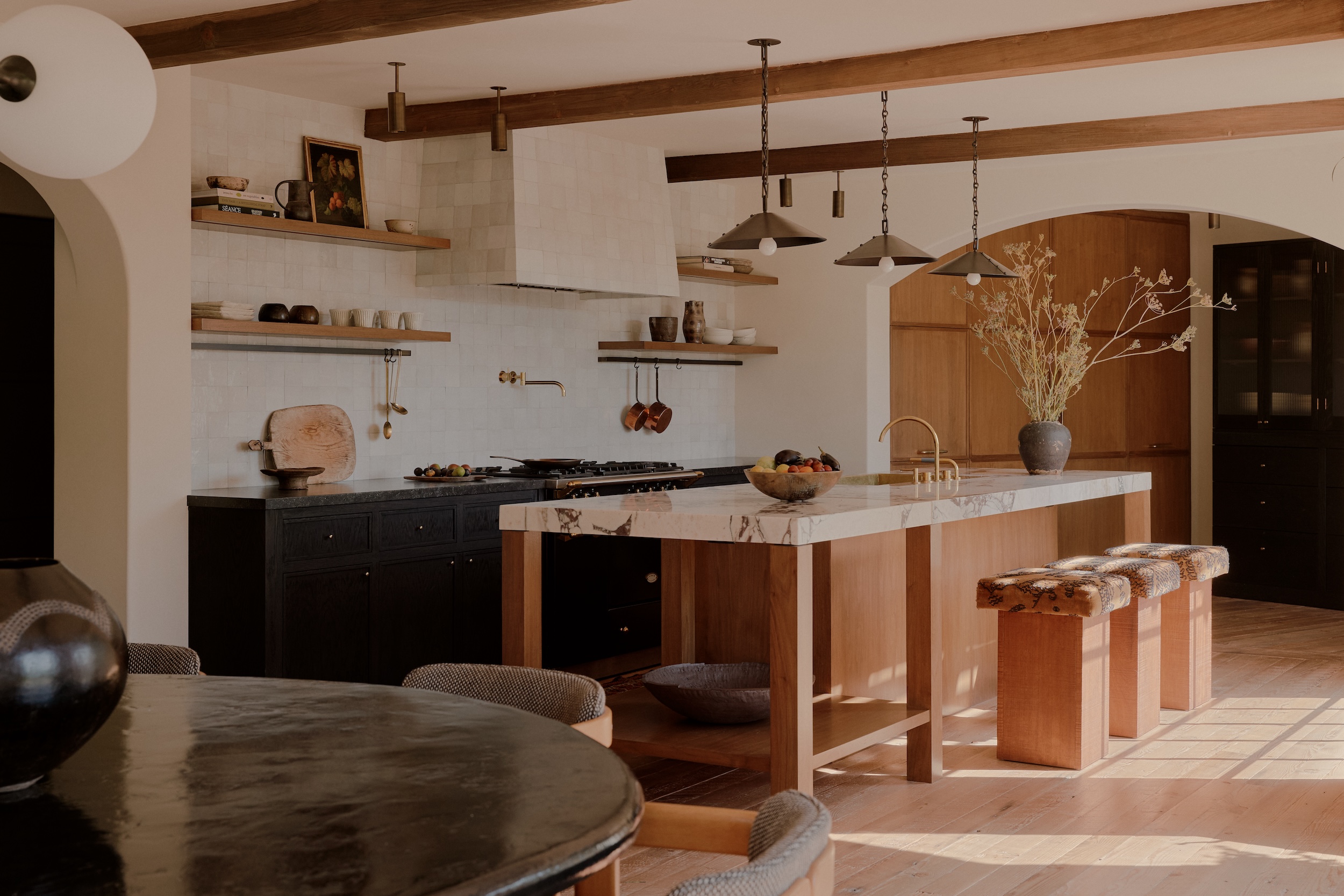 ‘Fall Guy’ director David Leitch takes us inside his breathtaking Los Angeles home
‘Fall Guy’ director David Leitch takes us inside his breathtaking Los Angeles homeFor movie power couple David Leitch and Kelly McCormick, interior designer Vanessa Alexander crafts a home with the ultimate Hollywood ending
By Anna Fixsen
-
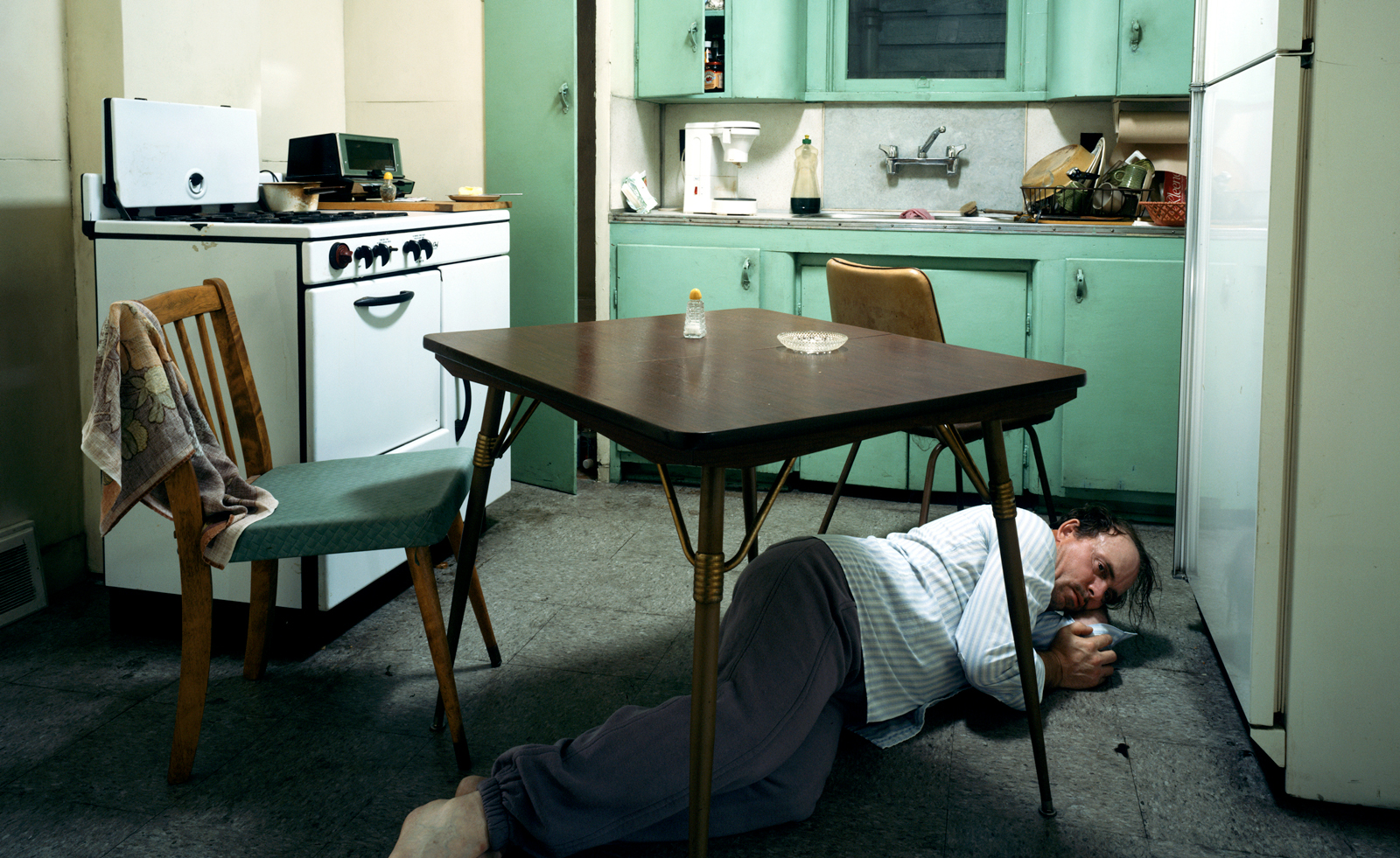 Real or imaginary? Step inside the alternate world of Jeff Wall's photographs
Real or imaginary? Step inside the alternate world of Jeff Wall's photographsJeff Wall's major show at MAAT in Portugal dives into four decades of the photographer's career
By Emily Steer